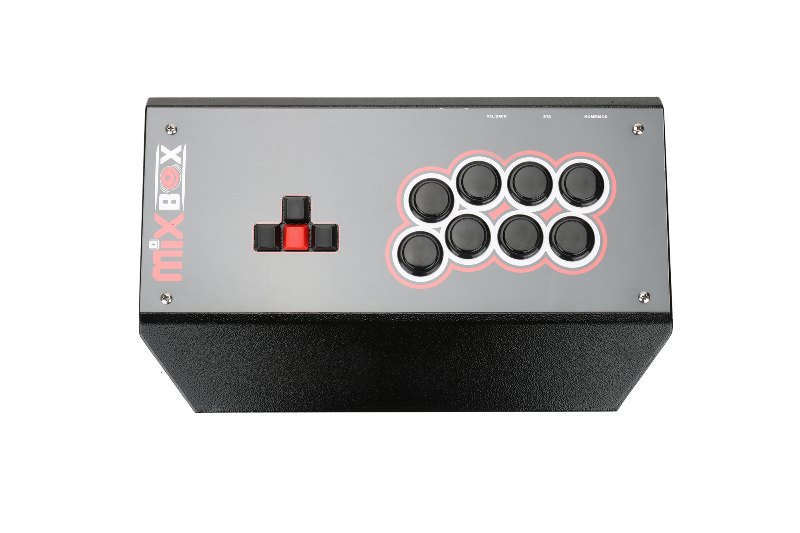Fightsticks have been around for a while now. The portable home fightstick rose to prominence in the mid-to-late 2000s and has been on a steady upward trend ever since.
More recently, there have been innovations in the fightstick world in the form of the Hitbox and Mixbox.
These fightsticks look familiar enough but are missing one crucial element: the joystick.
Instead of a lever, you have buttons or keys like on a keyboard. Essentially, a stickless arcade stick.
What is the point of these joystick-less fightsticks?
People are drawn to Hitboxes and Mixboxes because they offer increased precision, speed, comfort, and customizability compared to traditional fightsticks with joysticks.
While these controllers may not be for everyone, they have become popular for gamers who value their unique features and advantages.
In most cases, it gives you the advantage of someone using a fightstick with a lever. Whether or not this is fair is probably up for debate. Hitboxes have been known to be banned from some tournaments.
The main reasons why gamers prefer these controllers:
- Precision: Hitboxes and Mixboxes provide more precise inputs than traditional joysticks. Button-based directional inputs on a Hitbox or the WASD layout on a Mixbox can lead to more accurate movements and input execution, especially in fighting games where precise inputs are crucial.
- Speed: With buttons for directional inputs, players can potentially execute movements and combos more quickly than with a joystick. This increased speed can give gamers a competitive edge in fast-paced games.
- Comfort: Some players find the button-based or keyboard-style layout more comfortable and ergonomic than a joystick. Those accustomed to playing games on a keyboard may find the transition to a Mixbox more natural, while others may prefer the all-button design of a Hitbox.
- Learning curve: While a learning curve is associated with adopting a Hitbox or Mixbox, some players believe mastering these controllers can lead to better overall gameplay. The unique layouts can force players to relearn certain techniques and develop new muscle memory, which may result in more efficient gameplay once mastered.
- Customizability: Hitboxes, in particular, offer high customizability regarding button layout and mapping. This feature allows players to tailor their controllers to their preferences and gaming needs.
- Durability: Hitboxes and Mixboxes are typically built with high-quality components, such as Sanwa buttons, ensuring a durable and long-lasting controller. In some cases, the absence of a joystick may also contribute to increased durability, as fewer mechanical parts can wear out or break.
Now that we know why people choose these fightsticks, let’s look at both closely.
Mixbox Vs Hitbox Comparison
Mixbox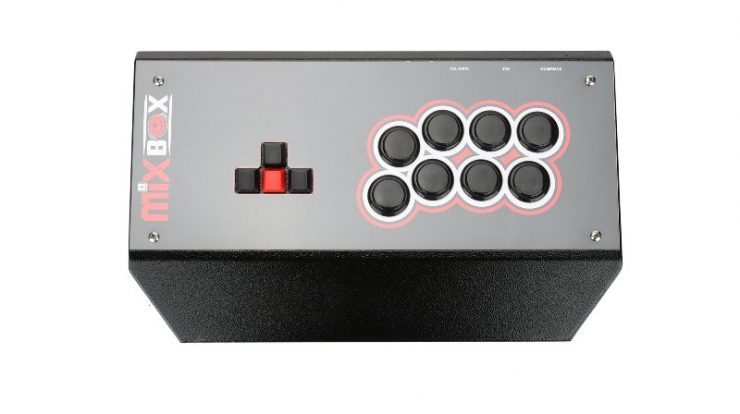 | Hitbox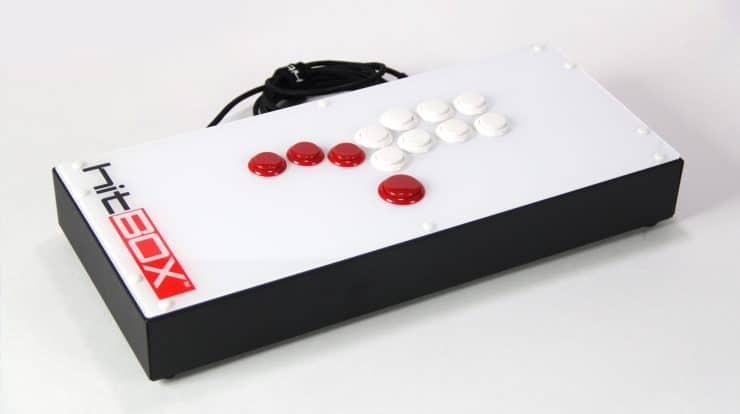 |
|
Dimensions | 14.9 inches x 9.0 inches x 2.4 inches (38 cm x 23 cm x 6.2cm). | 16 inches x 7 inches x 1¼ inches |
Weight | 5.5 lbs (2.5 Kg) | 4.5 lbs |
Platforms | PS4, PS3, PC | PS4, PC, Nintendo Switch |
Features |
|
|
What is a Mixbox controller?
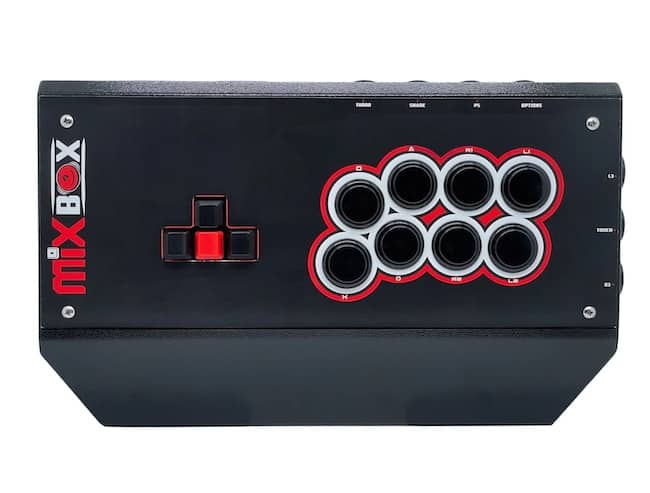
The Mixbox controller is similar in shape to a fightstick. It has a sturdy metal case. The weight feels nice and hefty.
On the right-hand side, there are 8 OBSF-30 Sanwa buttons. As expected, the quality of these buttons is solid, with great responsiveness.
On the left-hand side, things get more interesting. 4 WASD keys replace the joystick lever. These are Cherry MX mechanical key switches that are ideal for gaming. They’re precise and respond well.
You’ll feel right at home if you’ve ever used a keyboard to play fighting games.
A diagonal front panel provides great wrist support and makes the Mixbox comfortable.
Features of Mixbox
- WASD-style directional keys
- Sanwa buttons for accurate inputs
- Sturdy metal case with a sleek design
Mixbox Compatibility
Another great thing about the Mixbox is if you get the universal edition, it supports most major platforms, including PS4 Pro, PS4, PS3, Nintendo Switch, and even WII U.
What is a Hitbox controller?
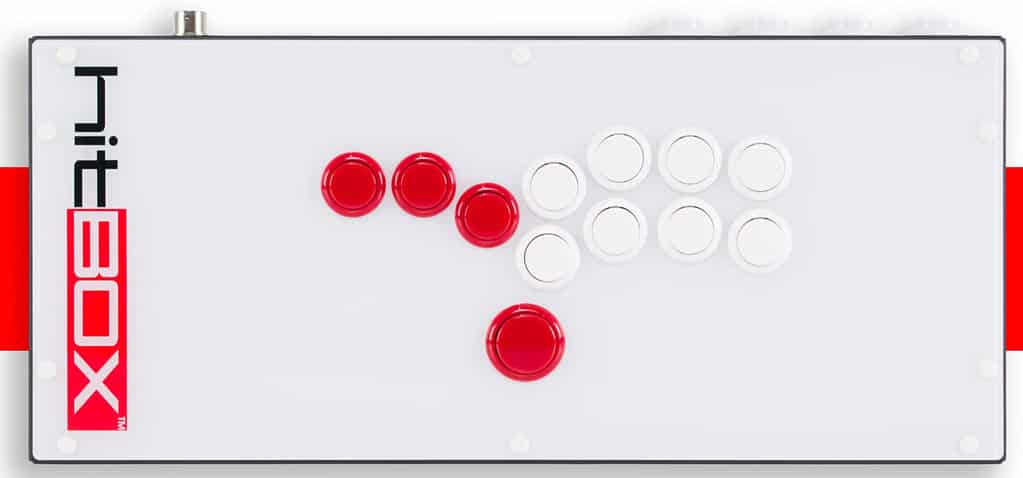
The Hitbox opts for physical Sanwa buttons instead of the joystick. This feels more like familiar territory and closer to an actual fightstick.
Because of the sensitivity of Sanwa buttons, this allows for much quicker button inputs than if you were to use just a Sanwa JLF lever. There isn’t a lot of science to this. In most cases, you press a button quicker than you move a joystick. That’s it.
There have been cases where Hitbox controllers have been banned from tournaments. This is probably in response to Diago using a modded Hitbox called a Gastrobox in a tournament.
Although, as you’ll see from the link, this was based on false information.
Features of Hitbox
- Button-based directional inputs
- Sanwa buttons for accurate inputs
- Customizable layout and button mapping
Hitbox Compatibility
Hitbox controllers are compatible with various gaming systems, including PlayStation, Xbox, Nintendo Switch, and PC.
Mixbox vs. Hitbox: Comparison
Design
The Mixbox features a keyboard-like design with WASD keys for directional inputs and an arcade button layout for actions. On the other hand, the Hitbox has a button-based design for both directional inputs and actions.
Button Layout
Mixbox and Hitbox use Sanwa buttons, known for their accuracy and responsiveness. However, the Mixbox utilizes WASD-style directional keys, while the Hitbox replaces the joystick with directional buttons.
Ease of Use
The Mixbox may be more comfortable for gamers who are used to keyboard controls, as the layout is similar. With its all-button design, the Hitbox might require a learning curve for players who have never used a button-based controller before.
Responsiveness
Both controllers provide fast and accurate inputs due to their Sanwa buttons. However, some players may find the Mixbox’s WASD keys more responsive for certain games, while others may prefer the button-based directional inputs of the Hitbox.
Customizability
The Hitbox offers more options for customizing the layout and button mapping, making it a better choice for gamers who like to tailor their controllers to their preferences.
Advantages and Disadvantages
Advantages of Mixbox
- Familiar layout for keyboard users
- Precise and responsive inputs
- Sturdy build and sleek design
Disadvantages of Mixbox
- Limited customizability compared to Hitbox
- It may not be suitable for players used to joystick controllers
Advantages of Hitbox
- Button-based directional inputs for increased precision
- High customizability with layout and button mapping options
- Responsive Sanwa buttons for accurate inputs
Disadvantages of Hitbox
- The learning curve for players not used to button-based controllers
- It might not be comfortable for those who prefer keyboard-style directional inputs
What is the difference?
Functionally, the Mixbox and Hitbox try to achieve the same: to allow for faster and more precise directional movement. Again, this is because they use buttons that are cleaner, easier, and faster in some cases, to use compared to a joystick.
The difference between the two controllers is how they achieve this:
- The Mixbox opts for the style of ‘keys,’ which is more representative of a keyboard and thus easier for keyboard players.
- The Hitbox opts for Sanwa buttons, which are more like a traditional arcade stick and will likely appeal to keyboard users and people who use a joystick and want to switch to this controller style.
Regarding comfort, I would say the Hitbox feels slightly more comfortable. Don’t get me wrong, the Cherry MX switches feel great, but I wouldn’t say I like the angle of the directional buttons.
It would be ideal if they were rotated slightly at 15°. Fortunately, Mixbox did listen to feedback from other users and has released a version that rotates the arrow cluster slightly, allowing for a more comfortable gaming experience.
I would say that, overall, Mixbox probably appeals more to 3D fighters, for example, Tekken, Soul Calibur, or Dead Or Alive.
On the other hand, Hitbox can appeal slightly more to 2D fighters like Street Fighter but can also hang with 3D fighters. So, I guess it comes down to personal preference.
Do you like the WASD style of buttons on the Mixbox? Then, get the Mixbox. Otherwise, the Hitbox will suit everyone else.
Sources
- Mixbox Official Website: https://www.mixboxarcade.com/
- Hitbox Official Website: http://www.hitboxarcade.com/
- Reddit Community for Fightsticks: https://www.reddit.com/r/fightsticks/
- EventHubs – Comparison between Mixbox and Hitbox: https://www.eventhubs.com/news/2018/aug/25/keyboard-users-rejoice-mixbox-controller-offers-wasd-directionals-and-sanwa-buttons/

